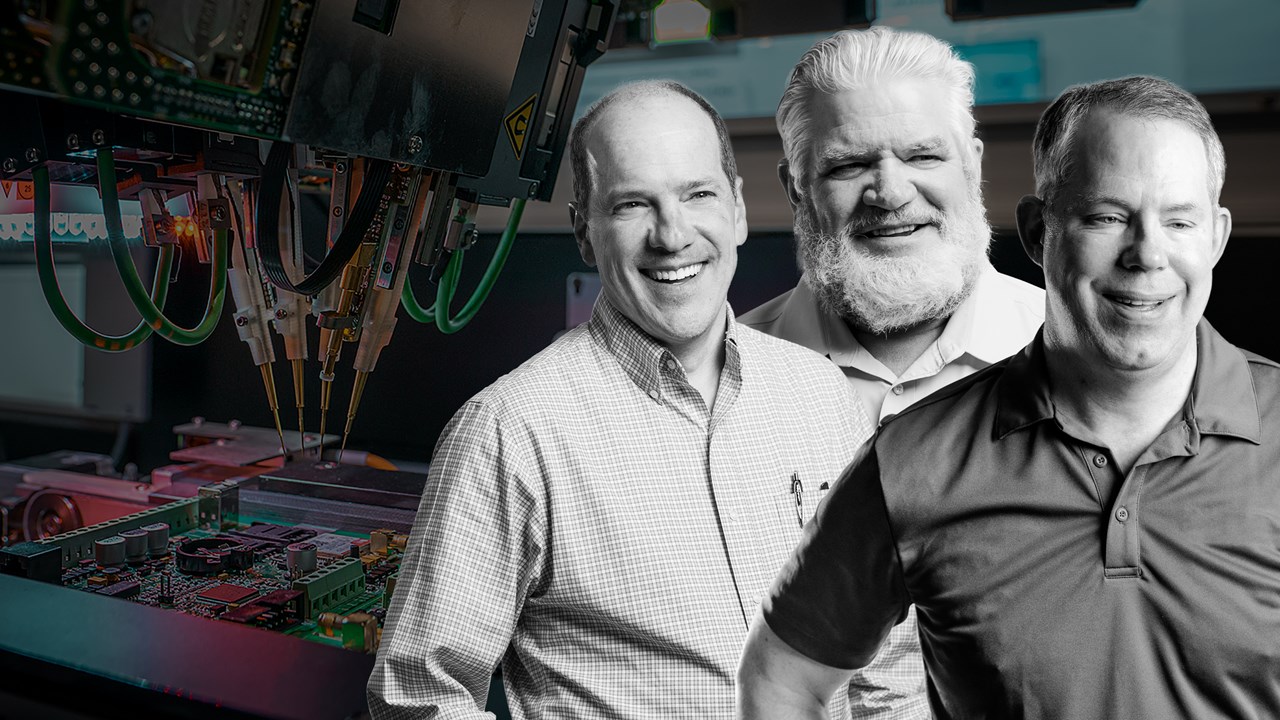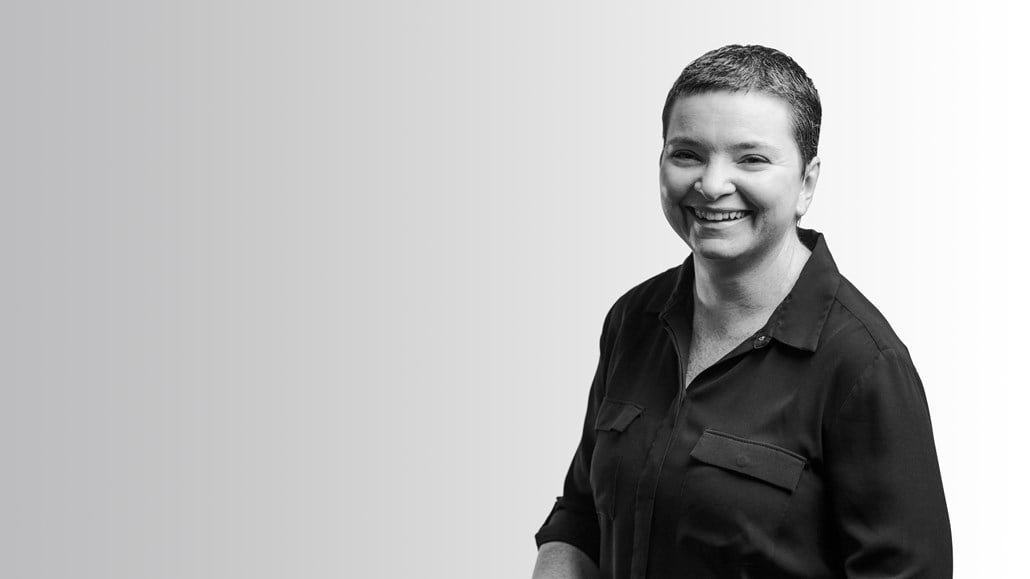Subscribe to Our Blog
Receive updates from our team as we share application notes, customer spotlights, educational tools, spectroscopy how-to’s, and more.

Ocean Insight leaders discuss the company’s dedicated customer focus, our experience as a provider of industrial solutions, and the untapped potential of optical sensing to improve manufacturing efficiencies.
As part of its mission to support a safer, cleaner, healthier world through scientific discovery and an integrated approach to customer needs, Ocean Insight now has dedicated teams focused on the research and science community and OEM customers, and on industrial customers seeking complete optical sensing systems.
To learn more, we turned to Ocean Insight business unit leaders Jim Jenson, General Manager (at right in top photo), Core Technologies, and Steve Buckley, General Manager, Applied Systems (at left in photo).
These comments have been edited for length and clarity.
Rob Morris: Let’s start at the beginning: How would you describe your business unit and its mission?
Jim Jenson: The charter for Core Technologies is to focus on what we call our “core” products – spectrometers, fibers, light sources, software – and bring new, leading products to market. Our typical customers are the research and science community and OEM-type customers in industrial applications in life sciences, environmental, and food and agriculture.
Steve Buckley: In Applied Systems, we take the core components and solve specific problems. We build complete systems that can supply answers to customers who need something like a concentration or a calibrated answer, or a yes/no answer. Any problem that can be solved with spectroscopy is game for Applied Systems to tackle. Our typical customer is an industrial customer – someone in a factory or in an industrial situation where they need to get an answer.
The application could be quality control, or assessment of incoming material, or it could be something about their production line that they need to understand -- maybe a midpoint, maybe a reaction completeness in a bioreactor.
Morris: Why is this business unit structure important to customers? How do they benefit?
Jenson: Having the same resource pool to support both Core and Applied Systems customers effectively was challenging. By segmenting out those functions, that allows us to serve our customers better by having the organization focused and tailored to each type of business.
Buckley: Definitely. We have evolved into being able to lead in both areas. We know that if we focus our energies on building the best spectrometers on the planet, then our OEM customers and our research and science customers win. And similarly, if we have a dedicated team working on reaching markets with a very specific solution, then those customers will win.
Morris: Keeping the customer foremost makes a lot of sense.
Buckley: As team leaders, part of our job is keeping us internally aligned and ensuring the teams are focused on getting customers to the right place. Keeping alive that fearless and very dedicated customer focus that we’ve always had – that’s part of Ocean’s DNA.
Spectroscopy-based sensors can be utilized in semiconductor deposition and etching processes, and for chamber sterilization. These tools help to optimize wafer yields and quality.
Morris: Many in the marketplace know Ocean Insight as a supplier to researchers and scientists. What are some misperceptions about what we can do for industrial customers?
Buckley: We were recently in a customer meeting where they said, we didn't know if we should call Ocean for this because we associate you with research and science customers. We didn't know if you had something that you could do for us in this rugged industrial space.
Morris: They didn't realize we're very active in industry, did they?
Buckley: For example, because of customer agreements, what is not well known is that we do industrial measurements of millions of products a year in the consumer electronics space: measuring spectral response, measuring color, doing things like that in very challenging environments. But it's a closely guarded secret that we’d like to let out of the bag -- that we know how to do these things.
Jenson: If you're thinking about the value proposition of what Ocean does better than anyone else, we enable our customers’ success by providing an accurate, robust solution that we can scale to meet their manufacturing needs. Which is different than the competitor that builds a look-alike spectrometer and makes a few of them. We can go into mass customization and that's our specialty.
In the maritime industry, the need for timely and reliable technology-driven data is growing. This is driven by a desire to facilitate and accelerate continual improvement in efficiency, cost savings, environmental improvement and regulatory realities.
Morris: What challenges do industrial applications present?
Buckley: There is no one-size-fits-all solution, but we can craft the building blocks for an application with 80 percent commonality. And that's our goal: taking those modular products, building them into industrial-grade solutions, and then plugging those in with limited modification for a specific problem. So, whether that's in process analytical control or it's in color measurement in a factory, our goal is having those building blocks ready to go, on the industrial scale, with industrial fortitude.
The modular approach in terms of an internal focus is very helpful, because if we can get the right Legos in the Lego kit, then we can build things. It's just like when you were 6 years old and you had Legos. If you had all the right pieces, you could build the Starship Enterprise. We have all of the Legos required at Ocean to solve industrial problems.
Jenson: In the end, we can provide the customer a solution, whether it’s a spectrometer that they integrate and program themselves, or we build a product that includes the packaging and that sort of thing.
Morris: What are some things industrial customers should be aware of in integrating spectroscopy into manufacturing settings?
Buckley: It's never a seamless process to get a new technique into the field or to measure something new in the field. The challenge is providing a common language, platform and set of tools. For example, the customer is wondering if a particular concentration of X is detectable. But how is that “detection” defined? What is “detection limit” to them? Further, when an industrial customer says they need to detect X at some level, they often omit details like they need it 24/7, amidst fluctuating temperatures, pressures and more. With our experience, it’s possible to guide the customer through those issues – and once the customer understands, it’s possible to scenario-plan and craft the solution.
Morris: Recently, we have bolstered our capacity to support industrial and other customers with new products and services. Can you provide some examples?
Jenson: I can expand on that. Our pre-sales and post-sales support are key strengths for Ocean Insight. We think our Lab Services offering is a strength, too. We will build upon that as part of a new package for customers. We envision the concept of an Ocean ecosystem of support.
Buckley: Some of the new tools that we have include OceanDirect, a software developer’s kit that makes it much easier to program your spectrometer in all the common, up-to-date programming languages.
Morris: Machine learning is another programming tool that industrial customers can exploit.
Buckley: Machine learning is a powerful tool because it's perceptive. The mathematics engines can pick up on things that even a trained spectroscopist might not pick up on overtly by looking at the data. It saves time and it can generalize things so that you don't have to have a trained observer all the time -- once you train the model.
But machine learning can only do so much. Its value depends on the underlying information that it's trying to model. In industrial environments, the trick is getting a broad enough training set and then applying the math -- still with excellent spectra, because what the machine learning is doing is, looking for anything in the information that could account for the difference that it's trying to pick up. The only two things it knows is, my trainer has told me the differences I want to pick up, and I've got this data coming in.
Morris: So, I’m a customer searching for a spectrometer supplier to address a measurement challenge I’m facing. Why should I choose Ocean Insight?
Jenson: I alluded to this earlier, but we’re enabling customer success at the single experiment level all the way through mass production of an OEM-supplied component that could be integrated all the way through a custom solution that’s going to work for you on your production line. And the benefit of going with Ocean is that we can replicate that on a massive scale very quickly.
Buckley: And with ISO certification.
Jenson: We have all the things you need, from experiment to pilot production to volume production, with all the quality controls and repeatability and unit-to-unit variation, measurement and control, and reproducibility, and support. Support is a huge part of it. And Ocean has very strong capability in all those areas. To help in that whole transition.
Buckley: It’s the customer focus, rapid response, and mass customization – all at once.
Morris: There’s been a lot of change in the last year, in the world and in our business. What energizes you most as we move ahead?
Jenson: It’s rare when you have a combination of a growing company, new leadership and new product cycles coming out, with market conditions that are rebounding from COVID. The market is buoyant, with demand in every sector. Ocean has a huge opportunity with how we’re thinking about our business. And that’s exciting.
Buckley: I think we're one of the only companies as vertically integrated as we are. I’ve always loved, from engineering school onward, making measurements, getting data, seeing data. And so, getting that from the lab into industry is very energizing to me. I believe the penetration of optical sensing spectroscopy in manufacturing industries is something like 20 percent complete. What optical sensing delivers is efficiency. What it means is competitiveness globally.
Morris: That sounds like fertile ground for problem-solving.
Buckley: It's a big opportunity for Ocean to step in and use the tools, use the credibility, use the understanding that we've gained over 30 years of working with researchers and supplying customers with great tools to go to the next level and keep improving those tools. And, at the same time, get “democratized” spectroscopy into the manufacturing environment to provide new solutions.
Providing customers with confidence to find answers to their most pressing challenges
Innovations include a compact NIR spectrometer, next-generation spectroscopy software, and a system for in-line liquids monitoring

Receive updates from our team as we share application notes, customer spotlights, educational tools, spectroscopy how-to’s, and more.